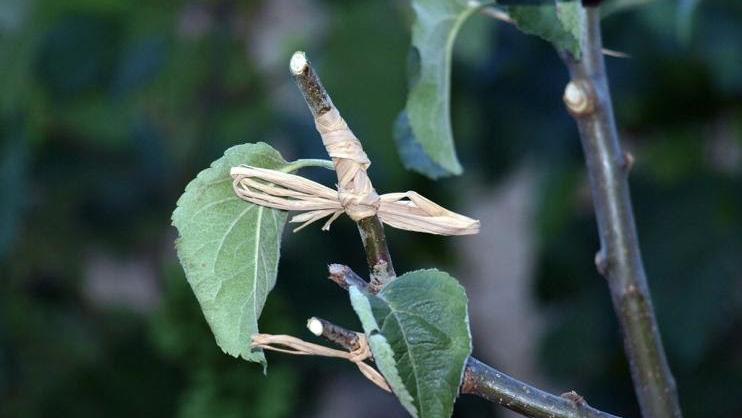Grafting: Turning Two Plants into One

Grafting involves joining two genetically distinct plants to unite and continue growth as a single, compound plant. The two parts of the compound plant are known as scion (upper portion producing the shoot system) and the stock or rootstock (the lower portion producing the root system). Grafting is the technique of inserting a section of the scion into an established rootstock.
Grafting is an important means of propagating trees, mainly fruit and nut trees, for the following reasons:
• Enables propagation of species and cultivars that cannot be done by other methods.
• Provides a method to use hardier rootstock than the parent plant, resulting in stronger root system.
• Utilizes a rootstock better adapted to local soil and local climate and helps control the size of the plant.
Grafting methods
There are three methods of grafting: whip, cleft, and bark. The grafting method refers to the technique used to secure the graft. The objective of each method is to bring the cambium layers of the stock and scion together and hold them tightly while the graft union forms.
To create a graft, cut a short section of a tree shoot and insert it into the limb or trunk of a seedling tree. To ensure the graft union heals properly, you must tightly hold the two parts together and secure:
Whip graft. The stock and scion are of more-or-less equal diameters. The graft is held together tightly and secured by tying or wrapping with string or rubber bands. Whip grafting is often used in root grafts where scion wood is grafted to a piece of root.
Cleft graft. Scion wood one-quarter to half-an-inch in diameter is wedged into stubs of stock that are 3 to 4 inches in diameter. This is usually done in the late winter or early spring before growth resumes.
Bark graft. Used for species that are difficult to graft. The graft is held together tightly and secured by nails. This is done in the spring after growth has resumed and the bark separates easily from the wood.
Always seal fresh grafts with grafting wax to prevent drying of the graft union before it heals.
Bud grafting is when the bud of a plant is grafted onto the stem of a rootstock plant. This is how propagators create fruit trees that bear numerous types of fruit. It is also useful for propagating new dwarf or semi-dwarf fruit trees and for creating self-pollinating fruit trees (by grafting trees that cross pollinate each other onto one rootstock tree).
